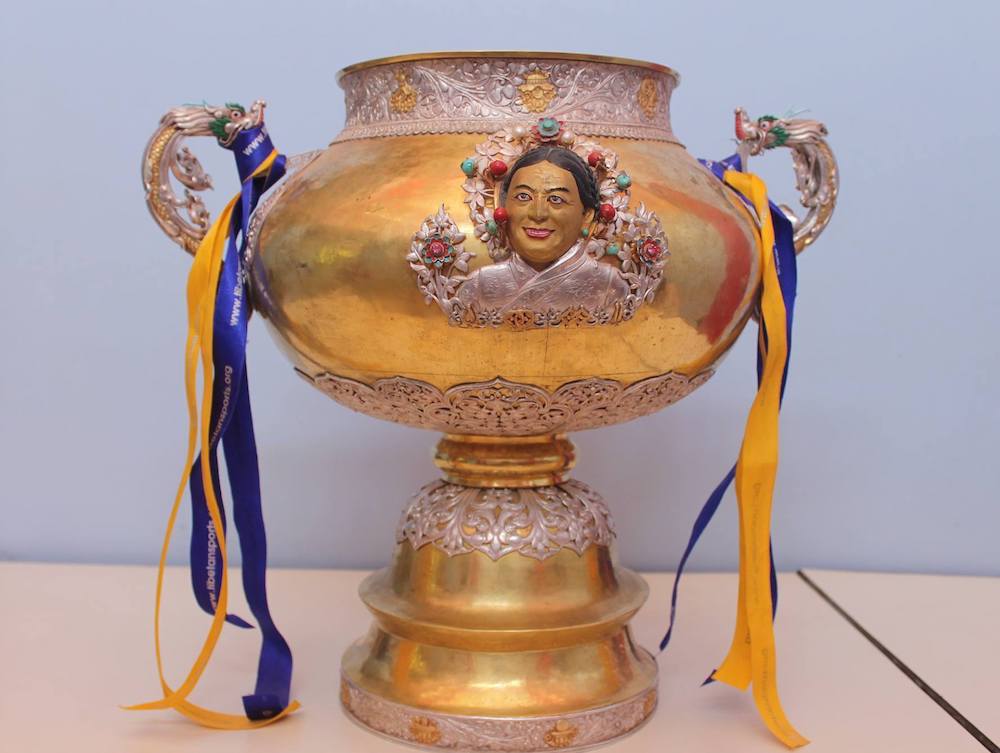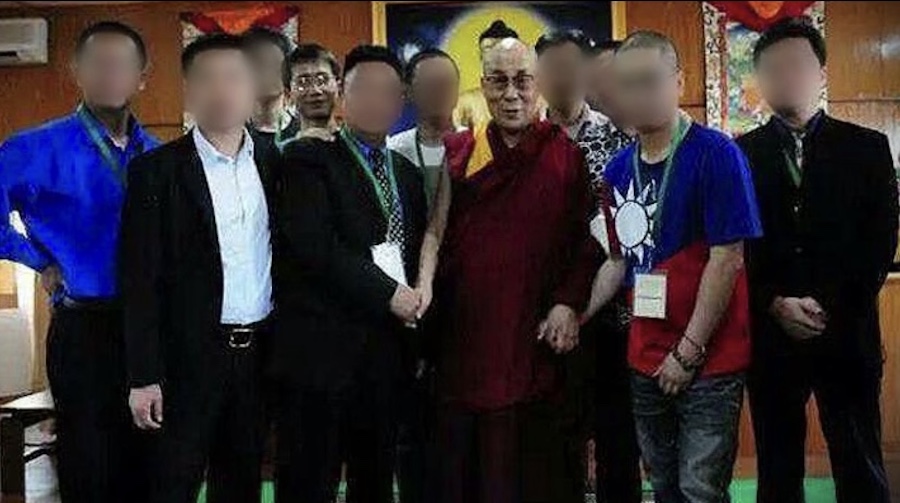The great American author William Faulkner wrote, in Requiem for a Nun, “The past is never dead. It’s not even past.” This quote has deep resonance for the Tibet issue; even the name of Faulkner’s work is chillingly apt in a time of self-immolation.
If history is not only alive but also ever-present, the question becomes: how should history be treated? Is history the sacred identity of an ancient people? Is history a political tool? Is history enduring, or will it break if it is twisted too much?
Right now in Lhasa, a new assault has been launched on Tibetan history. According to reports from Woser and the International Campaign for Tibet (ICT), the Chinese authorities in Tibet are spending $120 million to brainwash the Tibetan people into accepting a narrative of “harmony” between Tibetans and Han Chinese. They are even building a fake Potala Palace across the Kyichu River from the real one. This poses a question about how history can –- or should -– be used as a political tool.
According to ICT:
A multi-million dollar drama about a Chinese princess is being staged in Lhasa from August 1 in a bid by the authorities to increase high-end tourism and assert China’s propaganda message of its ownership of Tibet.
The Princess Wencheng spectacle will be staged with a cast of nearly 600 on a stage nearly 100 metres long, in a fake Potala Palace that faces the real Potala, former home of the Dalai Lama. It will be performed at a time when Lhasa is under military lockdown with snipers visible on rooftops and its citizens subject to intense surveillance and ideological campaigns.
The drama, which will be re-enacted 180 times annually according to the Chinese official media, is a state-scripted narrative in which the Chinese, embodied by Princess Wencheng of the 7th century, ‘civilise’ the Tibetans and bring harmony to Tibet.
Woser denounces this distortion of Tibetan history for political ends:
Under the influence of political and economic agendas, the myth of Princess Wencheng is finally becoming a “brain washing” tool. The play will use the latest modern electronic technology to celebrate the revival of an old “splendor”. But, when we talk about celebrating a “splendor” are we celebrating the splendor of the Tang Dinasty, or rather China’s current big nationalistic splendor? Perhaps this is an attempt to use the Princess Wencheng’s myth to materialize the glorious “China Dream”, which in fact is nothing more than a “Sinicization Dream”.
[…]
Not long ago, Party cadres organized in Lhasa the first “Symposium on the Princess Wencheng”, according to relevant information, during the symposium the Tibetan Bureau of Tourism had presented proposals for building “Princess Wencheng” themed gardens and theatre plays. Many academics, artists and journalists were invited to the symposium to discuss how to use the historical reference of “Princess Wencheng” as a central piece to promote “national unity between Han and Tibetans”.
In the view of Woser and ICT, the Chinese authorities are engaging in dangerous “brainwashing” by attempting to turn Emperor Songtsen Gampo’s junior wife into a symbol of Tibetan/Chinese “national unity” and “harmony” to suit Beijing’s political ends.
A different perspective on the use of history and the Wencheng narrative comes from Sikyong Lobsang Sangay’s 2004 article, “China in Tibet: Forty Years of Liberation or Occupation?” This article takes the Wencheng narrative and attempts to use it to prove that “Tibetans can live peacefully with the Chinese and show them respect.”
In this article, Mr. Sangay wrote that Wencheng’s marriage to Emperor Songtsen Gampo marks a “historical period of harmony” between China and Tibet. He asks, “Is there any way, that the spirit, if not the total substance of that relationship, can be revived again? ”
Mr. Sangay describes “prostration by Tibetans to the Chinese princess”, referring to Tibetan pilgrims prostrating in the Tsuklhakang before statues of the Tibetan emperor and his Nepali and Chinese brides. According to Mr. Sangay, this “great respect and love pilgrims … have shown toward the statue of Princess Wang Chen [sic] for more than a millennium is proof that there is no inherent hatred among Tibetans towards the Chinese per se.”
In 2011, The Tibetan Political Review conducted a review of Mr. Sangay’s published works (accessible here), including this 2004 article, so we do not see a need to comment further. Rather, we believe that bringing together the diverse viewpoints reflected by Woser, ICT, and the current Sikyong -– all of whom are dedicated to the cause of Tibet as they see it -– reflects the important larger questions of history posed above.
We believe that, for the Tibet issue, Faulkner is correct. History is alive and ever-present. We therefore believe it is essential for the Tibetan people to consider how our history is –- or should be -– employed in the Tibetan struggle, and to what ends.









